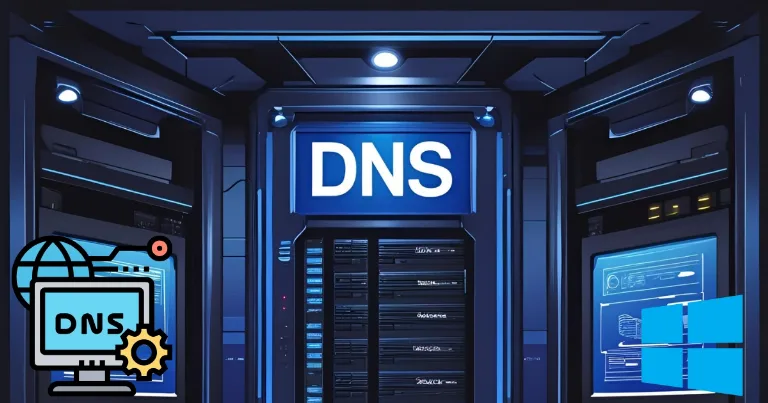How to Clear DNS Cache on Windows (All Versions)

Is your internet acting weird? Like, websites not loading properly or randomly timing out? Before blaming your Wi-Fi or calling your ISP, try clearing your DNS cache.
The DNS cache is like your PC’s memory for website addresses it helps load sites faster. But sometimes it stores outdated or broken info, and that’s when problems start.
The fix? Flushing the DNS cache. It’s quick, safe, and doesn’t require restarting your system. In this guide, I’ll show you exactly how to clear the DNS cache on any version of Windows whether you're on Windows 10, 11, or even older.
What Is DNS Cache and Why Does It Matter?
Think of DNS (Domain Name System) like your internet’s phone book. Instead of memorizing IP addresses like 142.250.190.78, you just type in google.com, and DNS takes care of the rest.
Your computer stores these DNS lookups in a temporary memory that’s the DNS cache. It helps load websites faster because it skips asking the DNS server every time.
But here’s the catch: if that cached info is outdated or wrong (maybe a site moved servers or changed settings), your browser can get stuck trying to reach an old address. That’s when you see errors like “Server not found” or “DNS_PROBE_FINISHED_NXDOMAIN.”
Clearing the DNS cache forces your computer to get fresh info the next time you visit a site like hitting refresh on your internet connection.
Do You Really Need to Clear Your DNS Cache?
Not always, but sometimes it’s the fix you didn’t know you needed.
If you're having weird issues like:
A website that loads fine on your phone but not on your PC
Pages refusing to load with DNS errors
Sites that used to work but now throw connection problems
…it might just be your DNS cache acting up.
Flushing it can also help after:
Changing DNS servers (like switching to Google DNS or Cloudflare)
Updating your host file
Migrating or updating a website you manage
Installing a VPN or proxy software
It’s safe to do and doesn’t mess with your files or settings think of it like clearing browser cache but for your network.
How to Clear DNS Cache on Windows 11, 10, 8, and 7 (Step-by-Step)
The good news? It's super easy, and the command works the same across most versions of Windows.
Here’s what to do:
Open the Command Prompt
PressWindows + R, typecmd, and hit Enter.
Or search for “Command Prompt” in the Start menu, then right-click and choose Run as Administrator.Type the flush command
In the black box (the command prompt), type this and press Enter:ipconfig /flushdnsYou’ll see a success message
Something like:"Successfully flushed the DNS Resolver Cache."

And that’s it. DNS cache cleared. You're good to go.
Clear DNS Cache in Your Browser (Chrome, Edge, Firefox)
Sometimes, it’s not just Windows holding onto old DNS info your browser can cache it too. If a website still won’t load right even after flushing DNS, clearing your browser’s DNS cache might help.
For Google Chrome and Microsoft Edge (they use the same Chromium base):
Open your browser.
In the address bar, type this and hit Enter:
chrome://net-internals/#dnsClick the “Clear host cache” button.
That’s it. Your browser’s DNS memory just got wiped.
For Firefox:
Firefox handles DNS a bit differently, but you can still clear it:
Type
about:networking#dnsin the address bar and press Enter.Click “Clear DNS Cache” near the top.
Done!
How to Check If Your DNS Cache Is Cleared
So you flushed your DNS cache now what? Let’s make sure it actually worked.
Option 1: Use Command Prompt (for Windows)
Press
Win + R, typecmd, and hit Enter.In the Command Prompt, type:
ipconfig /displaydnsIf your cache was cleared, you’ll either see an empty list or only a few basic entries (like localhost).
If you still see a long list of entries, try flushing again to be safe.
Option 2: Use Your Browser
Just try visiting the site that was giving you trouble. If it loads correctly now, congrats the flush did its job.
Final Thoughts
Flushing your DNS cache might sound technical, but it’s actually a simple fix that can save you from annoying internet issues. Whether a website isn’t loading right, or you’re stuck with outdated DNS info, clearing the cache is a smart move and it only takes a minute.
It’s good practice to do this now and then, especially if you’re dealing with slow loading times or you’ve recently switched networks or DNS settings.
Got any questions or tips of your own? Feel free to share in the comments!
About the author
Alex David Du
I’m Alex. I’m 28, born in Brazil, studied computer science, and writing is how I communicate best. I cover gaming, tech, simple ways to make money online, and other things I find interesting. I also love coding and building projects that bring ideas to life.
- Languages
- Portuguese, English
- Work Mode
- Freelancer - Remote
- Country
- Brazil
- hello@byalexdavid.com
